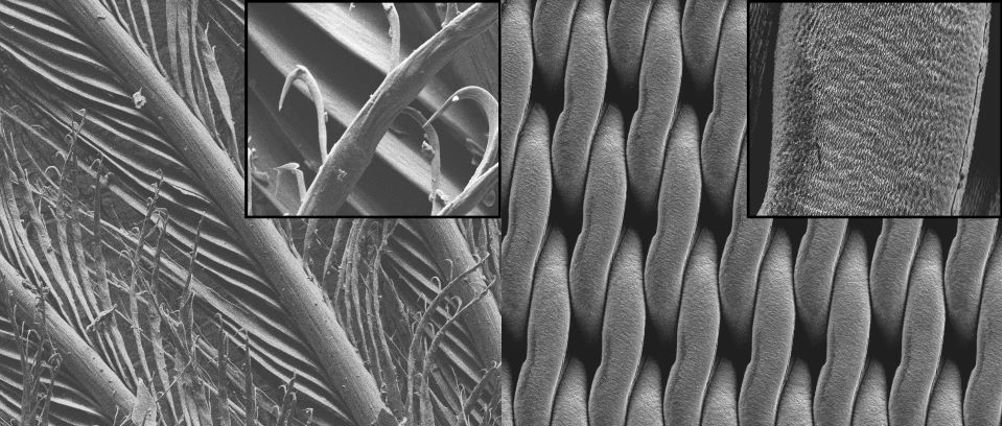Dealing with ice build-up typically depends on techniques that are time consuming, costly, and use a lot of energy along with various chemicals.
A solution could be found in Gentoo penguins, aquatic flightless birds that swim in the waters of the south polar region and have pelts that remain ice-free when the outer surface temperature is well below freezing.
“We initially explored the qualities of the lotus leaf, which is very good at shedding water but proved less effective at shedding ice,” said Anne Kietzig, an associate professor in Chemical Engineering at McGill and the director of the Biomimetic Surface Engineering Laboratory. “It was only when we started investigating the qualities of penguin feathers that we discovered a material found in nature that was able to shed both water and ice.”
“We found that the hierarchical arrangement of the feathers themselves provides water-shedding qualities, while their barbed surfaces lower the adhesion of ice,” added Michael Wood, a recent PhD graduate who worked with Kietzig and is a co-author of a new paper published in ACS Applied Material Interfaces. “We were able to replicate these combined effects through a laser-machined woven wire mesh.”
Related content
According to Kietzig, the key to ice shedding is all the pores of the mesh, which draw water in under freezing conditions.
“The water in these pores is the last to freeze, creating cracks when it expands, much like you see in the ice cube trays in your freezer,” Kietzig said in a statement. “We need such little force to remove ice from our meshes because the crack in each of these pores easily snakes along the surface of those woven wires.”
According to McGill, the researchers carried out wind-tunnel testing of surfaces covered by the steel mesh and found that the treatment was 95 per cent more effective at resisting ice build-up than an unenveloped sheet of polished stainless steel. Because there are no chemical treatments involved, the new approach provides a potentially maintenance-free solution to ice build-up.

“Given the number of regulations in place in passenger aviation and the risks involved, it is unlikely that airplane wings will ever be simply wrapped in metal mesh,” said Kietzig. “It is possible, however, that the surface of plane wings may one day incorporate the kind of texture that we are exploring, and that de-icing will occur thanks to a combination of traditional de-icing techniques working in concert in wing surfaces that incorporate surface texture inspired by penguin wings.”
The team said that more research is needed but results so far are promising.





Poll: Should the UK’s railways be renationalised?
Rail passenger numbers declined from 1.27 million in 1946 to 735,000 in 1994 a fall of 42% over 49 years. In 2019 the last pre-Covid year the number...